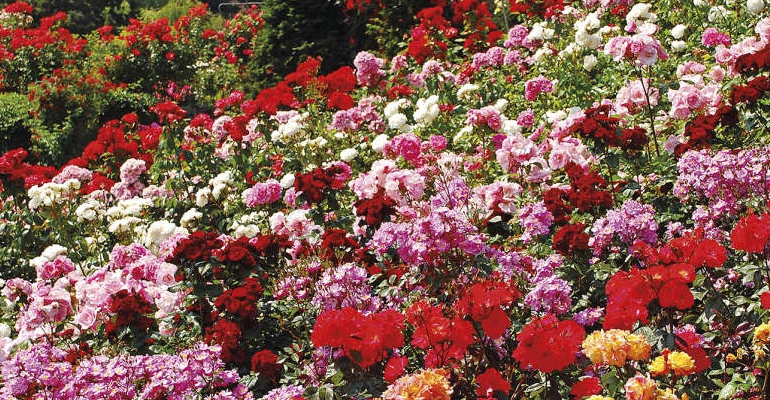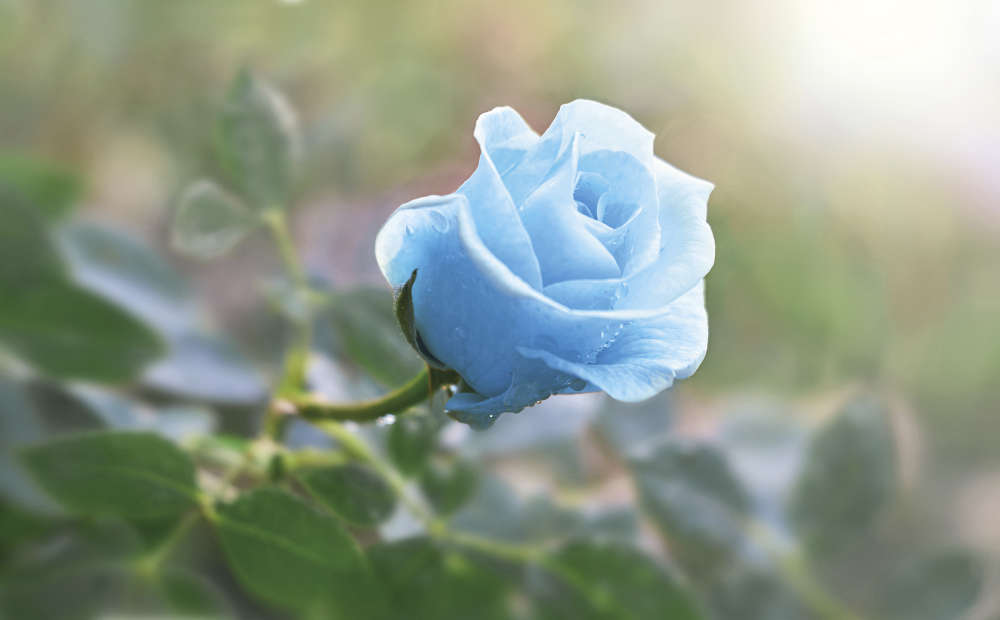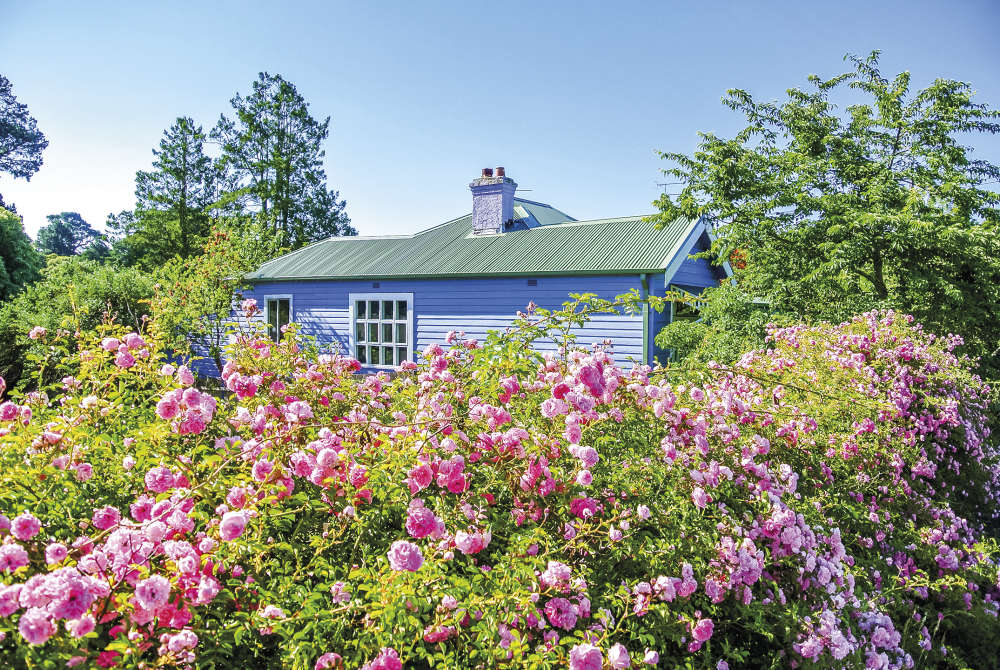
With her long history of religious and regal associations, all flowers bow down in deference before the rose. Flo Whitaker pays homage to Her Majesty and educates the rest of us
Roses have always beguiled us. They appear in Greek and Roman mythology, ancient Chinese writings, as well as Persian and Indian literature. Queen Cleopatra was bonkers about roses and the Empress Josephine was reckoned to have a collection of over 250 different types. Marriages and alliances have been celebrated with a showering of rose petals since the earliest times. A rosebud posy was considered a charming gift for an expectant mother, while ancient Egyptians solemnly garlanded their dead with roses. This most poetic, captivating flower has accompanied us through the centuries – from cradle to grave.
Early Christianity was quick to adopt rose imagery. Blood red flowers and cruel thorns symbolised the crucifixion, while representations of withered roses with broken stems reminded the viewer of the transience of mortal life. Roses and lilies are the flowers most associated with the Virgin Mary. Their exquisite blooms were thought to invoke feminine attributes of chastity and serenity. A common artistic theme depicted the Virgin seated under a rose bower within an enclosed and harmoniously ordered garden. In a church environment, worries and concerns may be aired to a priest in confidence and confessional boxes were sometimes decorated with rose motifs. ‘Sub Rosa’, (under the rose) is a term still used in business and legal circles to indicate ‘In the strictest confidence’ – giving us a direct time-travelling link to the medieval devotional world.
Roses are indigenous to most parts of the globe. They’re a large family of approximately 300 species, (naturally occurring types) and thousands of man-made varieties. Many modern roses can trace their lineage back to historic Asian and Persian forms. They do best in a sunny location, sheltered from winds, but are tough plants that will always try to please – some types tolerate light shade or a north-facing aspect. Most are very hardy; down to -10°c, considerably more for species forms. There are ground cover types, shrubs, ramblers, climbers and small-scale patio roses that are ideal for pots. Species roses bear pollen-rich, bee-friendly flowers and highly decorative hips in autumn. They are usually thorny characters, making them the perfect choice for a low-maintenance security hedge. Take time to consider the right rose for your location. Don’t be swayed just by colour and perfume! Research before you buy; noting height, habit and flowering time – some varieties will repeat flower over a long season.
Before the advent of the plastic flowerpot, roses were purchased as ‘bare rooted’ specimens. These field-grown plants are only available during their dormant period, typically November - March. Considerably cheaper than their potted counterparts and used to the harsher conditions of open ground, they’ll quickly grow away, whereas containerised plants accustomed to luxurious potting compost may take longer to acclimatise to garden soil. However, pot-grown roses have one huge advantage – they’re available throughout the year. The rose you fell in love with at the garden centre this morning can be planted into your border this afternoon.

Before planting any rose, ensure its roots are thoroughly hydrated. Drench a potted specimen until the root ball is sodden, (it’s easier to remove a pot if the soil is wringing wet). A bare-rooted plant should be soaked in a bucket of water for an hour and any damaged roots removed with sharp secateurs. Dig a hole 50% deeper and wider than the container/root ball. Put a spadeful of well-rotted manure and a spadeful of leaf mould into the hole and mix together with some of the excavated soil. Place the rose centrally in the hole and check the level before backfilling with soil. Firm in gently and give another good drink of water. Aim to plant about 5cms below the original planting depth. On a bare-rooted plant, a tell-tale line will reveal the original soil level; green-coloured stems indicate they were above the soil, whereas brown stems were underground. Roses, particularly newly planted specimens, can ‘rock’ in windy conditions and may lever themselves out of the ground. Planting slightly deeper will resolve this.
Blackspot, rust and mildew are the problems most likely to affect roses. These fungal infections are caused by microscopic spores blown on the wind or carried in water droplets. Fortunately, they usually cause temporary disfigurement, not permanent damage, although a severe infestation will defoliate and weaken a plant. Sprays can treat these conditions – follow the instructions carefully. Spray in a preventative fashion by starting early in the season when foliage is just unfurling, (even if the leaves appear clean) otherwise any dormant overwintering fungal spores will quickly infect new growth.
Regular spraying will greatly reduce, but never eradicate fungal damage. Practising good garden hygiene is the best long-term solution; a well-grown plant is better equipped to cope with pests or disease. Pick up fallen rose leaves as they are a perfect breeding ground for spores. Don’t compost rose leaves and prunings, place them in your green waste wheelie bin instead. A commercial composting facility will generate sufficient heat to destroy fungal spores but a domestic heap is unlikely to do so. Apply a thick mulch every spring, adding general-purpose fertiliser or well-rotted manure. A foliar feed applied every 10-14 days throughout the summer will give a real boost – especially to pot-grown specimens. Regular deadheading will promote new flower buds. Given a little care, these long-lived plants will reward you for many years. Somewhere in a celestial realm, Josephine and Cleopatra are dreamily flicking through rose catalogues. Needless to say, they both have roses named after them. Fit for a Queen, indeed.


 Blooming Times: Winter Sparklers
Blooming Times: Winter Sparklers
 Homes Extra: Restore, Repair, Recycle
Homes Extra: Restore, Repair, Recycle
 Home Style: A Scandi Winter's Tale
Home Style: A Scandi Winter's Tale
 Blooming Times: Winter Wonders
Blooming Times: Winter Wonders
 Home Style: Bold, Brave & Beautiful
Home Style: Bold, Brave & Beautiful
 Blooming Times: The Answer Lies in the Soil
Blooming Times: The Answer Lies in the Soil
 Blooming Times: Heavenly Hyacinths
Blooming Times: Heavenly Hyacinths
 Legendary Builds with Phoenix Construction Services
Legendary Builds with Phoenix Construction Services
 Blooming Times: Know Your Enemy
Blooming Times: Know Your Enemy
 Bespoke Dreams from Eridge Green Kitchens
Bespoke Dreams from Eridge Green Kitchens
 10 Hot Years: iFit Fires & Flues
10 Hot Years: iFit Fires & Flues
 Home Style: Bold Type
Home Style: Bold Type
 Blooming Times: The Sky's the Limit
Blooming Times: The Sky's the Limit
 Home Style: A Better Way of Life
Home Style: A Better Way of Life
 Homes Extra: Shed Space
Homes Extra: Shed Space
 Blooming Times: Top of the Pots
Blooming Times: Top of the Pots
 Kids Zone: Get the Kids Growing
Kids Zone: Get the Kids Growing
 Home Style: Pastures New
Home Style: Pastures New
 Homes Extra: Let There Be Light
Homes Extra: Let There Be Light
 Blooming Times: Wisteria Hysteria
Blooming Times: Wisteria Hysteria